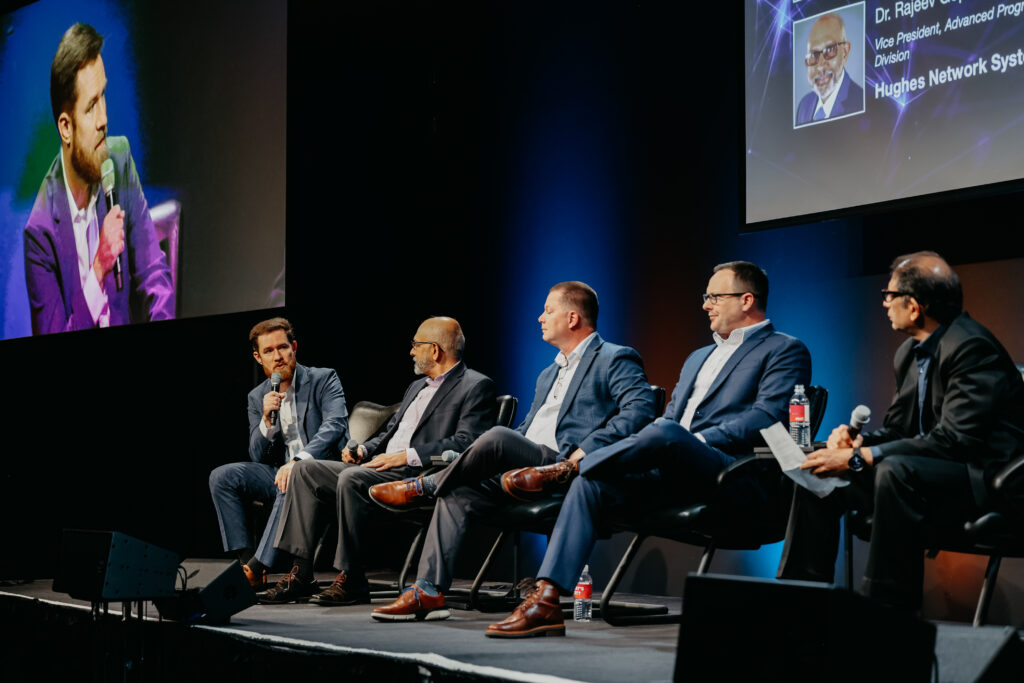By Chris Forrester

Moderator: Ahsun Murad, President/CEO, Optimal Satcom set the scene for his panel at the Smallsat Symposium held at Mountain View on February 6, by asking what would make a bad day in space for you? He also wanted the panel to examine the prediction that in 7 years or so there would be 100,000 satellites in space.
Louis Christen, Snr Director Proliferated Systems, Northrop Grumman Space Systems and is interested in about 130 satellites for the SDA. Collison avoidance, cyber threats are high on his radar. Mr Christen said as orbits get more congested there will need to be much better observability and monitoring.
Tim Lynch, SVP & Chief Strategy Officer, Frontgrade Technologies, said the ‘bad day’ question needed two parts, they were ‘man-made’ or non-man made. There might be debris, but the non-man made could be solar flares, an asteroid hit, or when flight systems start to fail and there’s the risk of conjunction. We have to ensure that if we can move a craft that we don’t move it just like the trolleys in a supermarket aisle, where there’s a clash! Boats and aircraft have radar, and we have figured these maritime and aircraft problems out and perhaps we need some of the lessons to be incorporated into commercial and military activity.”
Dr. Rajeev Gopal, VP, Advanced Programs Defense Division, Hughes Network Systems, has focused for the past 10 years on resiliency for Hughes and EchoStar. But I would hope that we can cover mitigation when something bad has happened. “We all have to remember that a cyber threat that hi-jacks a satellite means that the satellite then becomes a weapon. Weaponisation is a real threat, and where the problem could happen in minutes. We have sensors and programmes to monitor satellites, but it is the risk of a collision and where the debris field could wipe out a complete orbit.”
Dr. Gopal mentioned the complete maritime industry, and the occasional problems a vessel could suffer, and the 35,000-40,000 aircraft in the air at any one time and the consequential risk of catastrophe. “It has taken years and years to come up with system to mitigate catastrophes. But 100,000 satellites, or 1 million satellites, these are different magnitudes of risk. It is going to be a challenging problem. Maybe we need beacons on satellites, as we have on ships and aircraft. Modern software and architecture can easily handle 100,000 craft, or 1 million provided we know what is happening and that we have all communicated.”
Dr. Dan Ceperley, Founder/CEO, LeoLabs and says its 7 radar sites around the world help to monitor and spot events as they happen. “We have to be aware that it seems the solar problems are increasing in its current 11 -year cycle with 2025 said to be a peak. There’s also the risk, especially in LEO, where space traffic in orbit can be a problem. We have seen events, for example, the Russian Doll models when a craft dropped off another satellite. We need to be aware of this. The past few years we have seen a steep rise in the number of proximity problems. They used to be very rare. That’s not the case today. Rapid scaleability is the name of the game today. We build radars and can match the proliferation of satellites in LEO. But we must remember that the Earth is largely covered by water, and it is over the oceans that we also need monitoring.”
